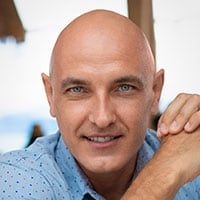

Choosing lenses and cameras has become even easier!
Date of publication: 15 Sep 2025I'm often asked about my opinion on different cameras or lenses. But I don't always have experience working with them. Sometimes I just want to learn and compare the gear myself. A huge number of subjective opinions and parameters complicate things. There are many websites and reviews online, and I use some of them. But now I want to tell you about one very good site. I use it myself and always "send" friends and others there:) Now it has become much more convenient thanks to an excellent filtering system.
Let me introduce: www.DxOMark.com
The site provides information about almost all cameras and lenses in the world (except Soviet ones). They are all organized into rankings and can be sorted by different parameters. Since the site is in English, I'll briefly explain some of the main parameters so that Russian speakers can evaluate a camera or lens without diving into technical details.
Choosing a Camera

* I'll leave my personal comments under the asterisk, with parameters valid at the time of writing.
So, 3 main parameters for cameras, more precisely for sensors:
- "Portrait" (Color depth) – The range of color depth, bit depth, or simply put, color rendering. This shows how well the sensor can distinguish fine color nuances, its maximum "color sensitivity" in bits. The number of colors the sensor can tell apart.
* Currently the leader here is Phase One IQ180 (26.5, priced at $42,490). Slightly below, in 3rd place, is Nikon D810 with 25.7 bits and priced at $3,300. In general, most cameras show excellent results. Personally, I don't pay much attention to this parameter. - "Landscape" (Dynamic Range) – The dynamic range of the sensor.
This is the range between the brightest and darkest areas the sensor can capture. If you underexpose (the photo comes out dark), a high dynamic range lets you "pull out" details without losing quality.
* This is VERY interesting. Nikon and Sony clearly dominate here. For example, the Nikon D810 has a dynamic range of 14.8 stops!
Reminder: a 1-stop change means twice the amount of light. In this ranking, Canon is much lower…
Canon EOS 5DS = 12.4
Canon EOS 1Ds Mark III = 12.
Trust me, those extra 2 stops give Nikon the ability to underexpose significantly and still recover information without color distortions. - "Sports" (Low-Light ISO) – When shooting moving scenes, like sports, the main task is to freeze the action by using a short shutter speed. To compensate for lack of light, you raise ISO, which increases noise. This parameter shows how well the sensor handles high ISO while keeping good quality.
* The leader by far is Sony A7S with a score of 3702. Nikon D810 has only 2853, and Canon EOS 5DS R just 2308.
Sony is far ahead. But I'm still not mentally ready to consider Sony as a wedding photographer's camera. The lenses are expensive and the selection is narrower compared to Nikon and Canon.
Of course, there are also:
- brand
- camera type
- megapixels
- sensor size
- approximate price
- release date
By orienting yourself with this data and filtering by ranges you need, you can choose exactly what suits you.
Choosing a Lens

* Again, I'm mainly interested in lenses for Nikon and Canon full-frame mounts, so my comments will focus on them. I'll skip manual lenses like Carl Zeiss and lenses over 200mm due to their specifics.
Lenses also have rankings, based on the following parameters:
- "Sharpness" – The higher this value, the sharper the photo will be at the focus point.
* Sorting by this, skipping the manual Carl Zeiss, the leader is Sigma 35mm F1.4 DG HSM A. I use this lens on Canon now, and love its wide-open sharpness. Its Sharpness score is 23. For me, it was surprising to see the Sigma 85mm F1.4 EX DG HSM at 17, which is quite good… Rumor says Sigma will release an 85 1.4 Art this year, which should be amazing in sharpness:))) Let's wait:) - "Transmission" – How much light passes through from front lens to sensor. More elements = lower transmission.
* The lower the value, the better. For example, among lenses I follow, the leader is Canon EF 50mm f/1.2L USM with transmission of 1.4 (not aperture). The Sigma 35mm F1.4 DG HSM A also shines here with 1.5. - "Distortion" – Geometric distortions. Stretching or bending lines.
* Longer focal lengths have less distortion, wide angles more. For some wide angles, it's even a "feature." I don't weigh this parameter heavily. - "Vignetting" – Darkening or lightening at corners compared to the center.
* I like slight vignetting. If I don't need it, I fix it in post. So for me it's not very important. - "Chr. aberration" – Color fringing where it doesn't belong, often purple outlines in backlit shots.
* This one matters. I love shooting against strong light. Lower numbers mean fewer aberrations. You don't need absolute purity (can look too "sterile"), but too many aberrations are bad.
Canon EF 135mm f/2L USM = 4
Canon EF 85mm f/1.8 USM = 3
Sigma 35mm F1.4 DG HSM A Canon = 6
All acceptable.
Canon EF 24-70mm f/2.8L USM = 13
Canon EF 24-70mm f/2.8L II USM = 15
Canon EF 16-35mm f/2.8L II USM = 13
Other standard filters include:
- brand
- lens type (wide, tele, etc.)
- focal length
- zoom or prime
- aperture
- mount
- price
- release date
Conclusion
After exploring the site I discovered a lot of new things and now I want a Nikon again )) More precisely, the Nikon D850 )) And you?
